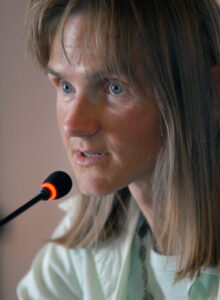The aim of the course is to get to know how to analyze examples of visual culture, including: fiction films and documentaries, video, photography. Both contemporary and historical materials will be studied, together with theoretical texts and publications (from the area of film and media studies, anthropology, cultural studies and history). Although images are mostly seen, if you want to really know them and understand them really well, you must not only “see” them but also “read” them, that means to analyze them as a complex message/ text. That is why at our course we will firstly discuss some terms and categories, that would help us to read images such as: composition, convention, genres, and narration, memory, representation. Analyzing images, we will be interested in searching for contexts of their production, places of display, and ways of collecting them. That is why we will talk about archiving (and digitalization), getting to know how connect archival images with facts, places and people in certain realities. So, we will discuss various ways of interpretation to discover histories and narrations hidden in films and photographs, that could not be always seen for the first sight.
Reading Visual Culture
Publication date 02.05.2023
- John Berger: Ways of Seeing (Chapter 1)
- W. J. T. Mitchell: Showing seeing: a critique of visual culture
Comments and discussions

